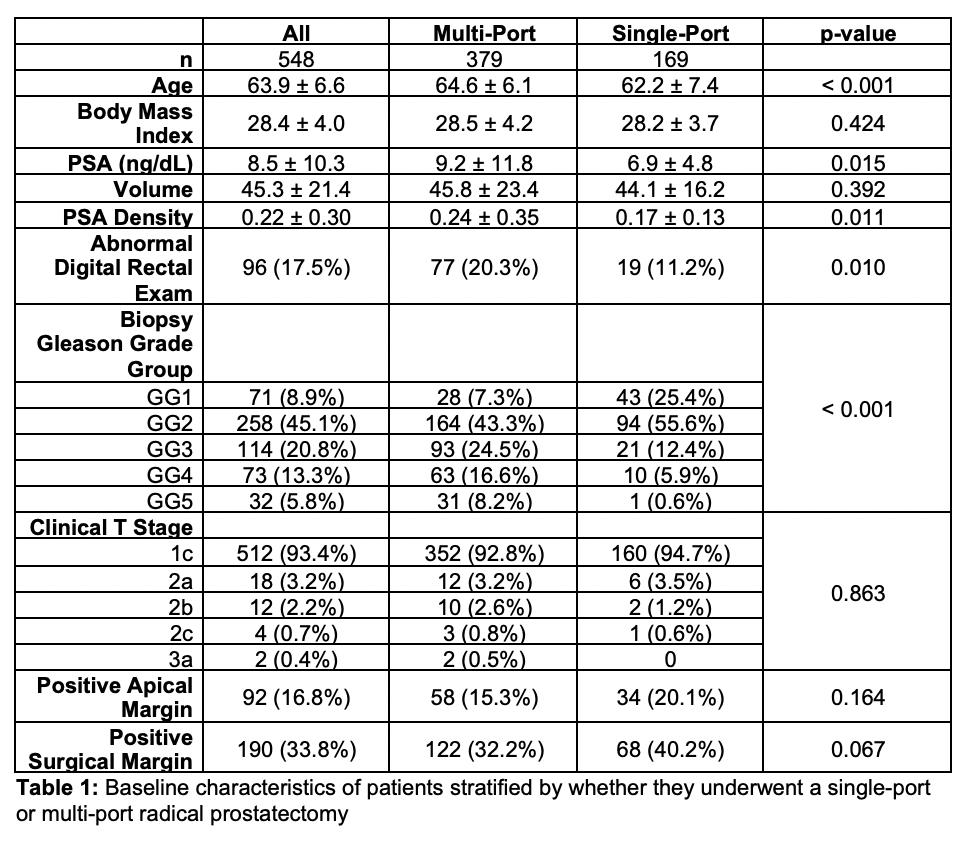BACKGROUND: It is suspected that the lack of an EndoWrist and a more flexible instrument shaft of working instruments with the Da Vinci Single Port robot makes the apical dissection more challenging during a robot-assisted radical prostatectomy. The objective of this study is to determine whether the single port approach is associated with a higher rate of positive apical surgical margins.
METHODS: We retrospectively analyzed the pathologic reports of patients who underwent robot-assisted radical prostatectomy (RALP) from January 2021 to June 2023. The primary outcome was a positive apical margin and the secondary outcome was any positive surgical margin. Patients were stratified by whether they underwent a single-port (SP) or multi-port (MP) RALP. Student t-test and Pearson chi-squared test of independence was used to compare continuous and categorical variables respectively. Propensity score matching of nearest neighbors with predetermined co-variates (age, BMI, prostate volume, PSA, clinical T stage, and biopsy Gleason grade) was performed to identify the treatment effect of using the single port robot on apical and all surgical margin positivity.
RESULTS: A total of 548 patients were identified of which 379 underwent multi-port RALP by 8 different surgeons and 169 patients underwent single-port RALP by two different surgeons. There was a total of 92 positive apical margins (58 MP vs. 34 SP, p = 0.164) and 190 surgical margins (122 MP vs. 68 SP, p = 0.067). The groups were similar with respect to BMI and prostate volume. Patients who underwent SP RALP were younger (p <0.001), had lower PSA values (p = 0.015), and lower PSA density (p = 0.011). Between the two cohorts, the distribution of abnormal DREs was not independent (p = 0.010) and the biopsy pathology distribution was not independent (p < 0.001). On propensity score matched analysis, treatment using the single port robot was a predictor of positive apical surgical margins (OR: 1.35, 95% CI: 1.07 - 1.70, p = 0.012) and any positive surgical margins (OR: 1.35, 95% CI: 01.05 - 1.73, p = 0.019).
CONCLUSIONS: Rates of positive surgical margins, including apical margins, are higher in single-port compared to multi-port robotic radical prostatectomies.
